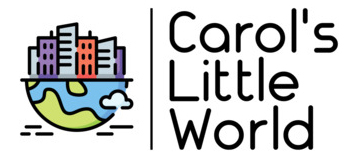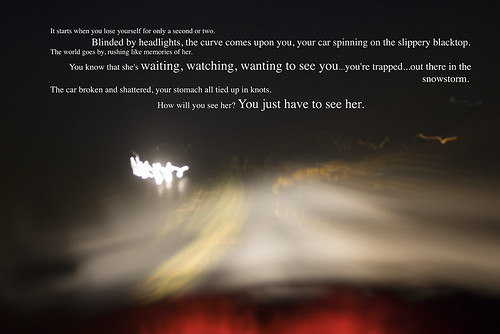I get asked a lot about artist statements. Actually, I take that back, I try to read artist statements and, more often than not, end up befuddled and confused. I thought it might be a good time to offer up some tips for photographers to use when writing artist statements.
Tip 1: Keep it short!
Your artist statement should be about 2-3 paragraphs. This is not War and Peace so write accordingly please.
Tip 2: Keep it focused!
The artist statement is used to convey information about the work (specific work here) in the show, catalog, book, or whatever. That sort of implies the artist statement is not the time to go on about how “blue” is your favorite color or what inspired you to first pick-up a camera. No, narrow yourself down and focus on the task (or images!) at hand. If it helps, lay out the work in front of you. What do the pieces have in common? What do they share? What dialogue do they start with the viewer? Why are they *not* about? Ask yourself these sorts of questions to help you focus in on the work in front of you and not about your career in general or the price of tea in China.
Tip 3: Keep it About the Work
An artist statement is *not* a bio. It’s not about you, it’s about your work. Keep on topic and specific to the work.
Tip 4: Keep it Professional!
For crying out loud, run spell checker on the thing. Make it look a bit polished, it’s not too hard. Choose a typeface that is legible and use things like paragraphs, punctuation marks, and whatnot correctly. Your art is professional, why isn’t your artist statement? Also, speak in a natural voice. This is not the time to go all Thesaurus on me, OK? If it’s got 42 syllables, it might make a great Scrabble play but it probably should not get stuffed into the middle of your artist statement in a feeble attempt at making yourself sound “educated.” You’re not going to fool anybody and your natural voice is just fine, thank you very much.
Tip 5: Keep it Creative!
Yes, it has to be professional but that doesn’t mean you can’t write a Haiku. Or a sudoku. Or a two paragraph dissertation on why supply-side knitting is really good for one’s soul. Seriously. Show me something different. Make it be about the work, yes, but make it fun. Make it sound like you. Keep it special and precious and relevant.
Tip 6: Keep the Reader in Mind!
Oh, now this is a *big* one with me. When you write something, when you write anything, it’s always a good idea to keep the reader in mind. Who is going to be reading your artist statement and why would they want to know *this*? These sorts of questions are always good to ask. Most artist statements are read in gallery settings and often used to create marketing materials and the like to promote the show. If somebody is considering purchasing your work, they might first read your artist statement. Think about that as you write it. Do they really need to know why you love chicken soup and how that inspired you to paint? Consider the poor reader who has to endure your writing before you put pen to paper please.
Tip 7: When all Else Fails…
If these tips are not enough, or even if they are, consider having somebody else read your statement. Show it to a few artist friends. Read other statements on the web. Practice writing and learning how to articulate about your work. You don’t need to go on and on about it, but learn how to do it. It’s a skill that will serve you well over time, really it is. And, it goes without saying but, practice makes perfect here. Writing is re-writing. There’s no harm in polishing an older artist statement so go ahead, take the cobwebs off, dust one off, update it, and use it again. If it was good enough the first time…recycling is cool now, isn’t it?
Tip 8: Avoid Doing Laundry!
An artist statement is not a laundry list. Don’t write it like it is. Don’t write things like, “As a painter, my influences are….” and then list out 42 different names across 32 different genres of work. Nobody wants to read that. Please, please, please, I beg of you, lists are not good because: nobody wants to read them, nobody wants to write them, they look and sound too much like laundry and, did you see what I just did here? Yeah, gave you a list. I’m sure you didn’t like it either (so there!) Seriously. Cut the lists, loose the fat, hone the statement.
Tip 9: The World Does Not Revolve Around YOU!
One tip I always share in my sessions about biographies is how a biography really isn’t about you. Allow me to explain. Yes, the bio is all about you, you, and you but, in order to draw people in, in order to catch readers’ interests, you can’t make it be all just about YOU. I always tell my students “put something else in there! Show me something interesting. Catch my attention and then slip in the ‘YOU’ bits.” That’s good advice. So good, in fact, that I’m going to recommend you do it in your artist statements as well. Yes, you are the artist and the artist statement is about the artist, from the artist’s voice, but don’t make it be all about YOU. Draw me in. Have a hook. Write me a catchy jingle or seduce me with a few kind words before you clobber me with YOU.
Tip 10: If You Are Still Stuck
If you have gotten this far and nothing helps, there are a few other tips I can offer you. Lay the art out in front of you. Ask the questions…what does my art look like? Why did I make it? Where did it come from? What are my influences? Does nature inspire me? What about heroes? (Prior artists) Is it bigger than a breadbox? These sorts of questions can help. Also ask yourself, if this were a piece of music, what would it be? A classical piano concerto? A John Coltrane song? Maybe a blues number? Bring it to another media, even if only in your head and then try describing it. Look for your favorite quotes or check out some new art in order to inspire looking at your work in a new light and maybe getting that spiffy artist statement home. Try online forums and local art groups if you really need some help, there’s no harm in asking.
I hope these help awaken the artist statement writer within you. (Ha! Who am I kidding. OK, I’ll say it bluntly. Don’t walk off a cliff yet, there’s still hope. You can do it! I know you can. Come on now!)
Until next time…


Author
good ideas for blogging also…
Author
Thanks, Lin, glad you like them. Unfortunately, artist statements are like an entirely different beast. I've seen many folks, good writers even, completely unable to produce one. It's like, as soon as we sit down to do it, blank-ness hits!
I think because there is a history of these sorts of statements being so "over written" and so specialized that it makes them harder to write. In the old days, they used to use the artist statement as a (sort of) means to tell who was educated, with the thinking being, if you could write one, you were. I don't think that's true nowadays but yet the statement has lingered on, and we still hate them.